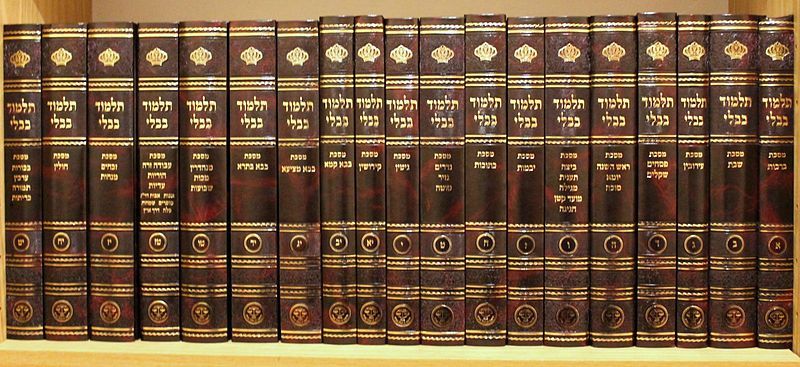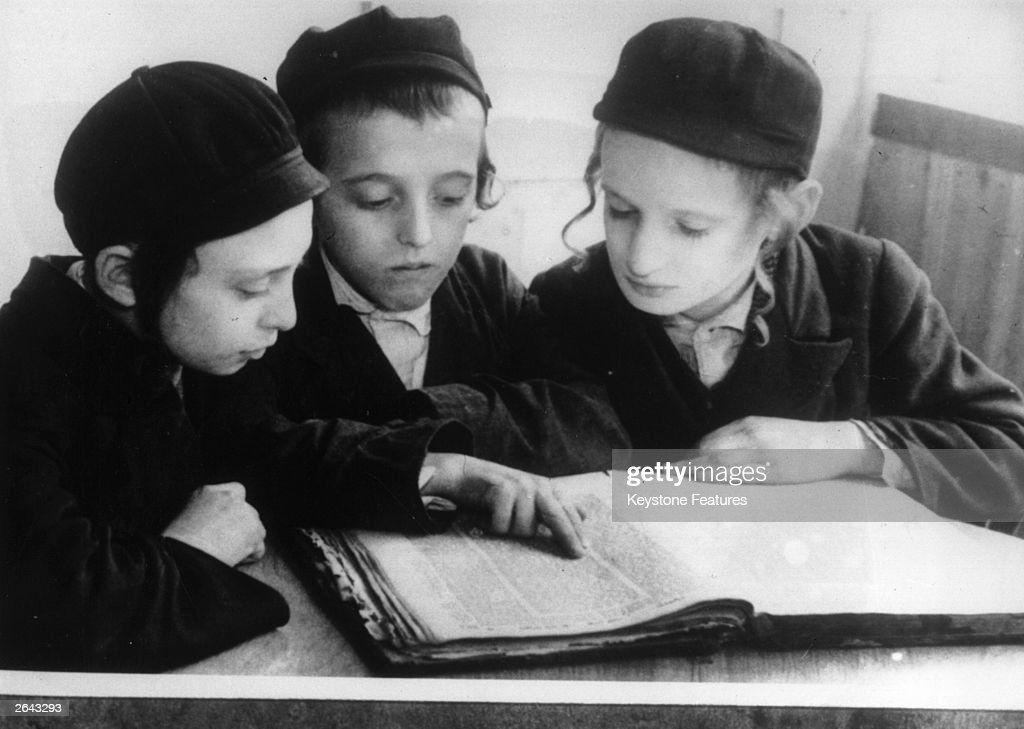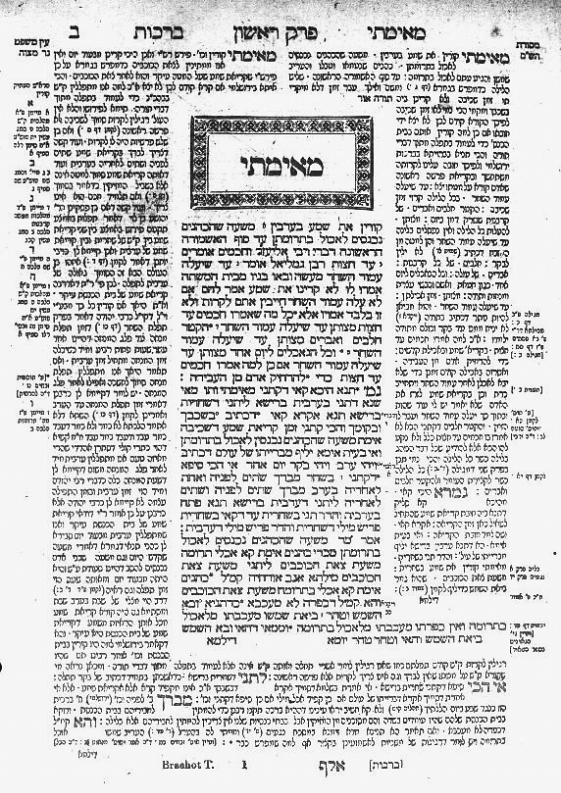Shabbat Gathering: What’s Talmud anyway?

Dear Chevra, as is our custom, we will gather tonight at 5.45p ct to welcome Shabbat. These are the coordinates:
Zoom
Meeting ID: 963 5113 1550
Password: 1989
Phone: +1 312 626 6799
Rabbi Laurie will be away.
(To unsubscribe from the newsletter, click the link at the very bottom of this email.)
Here we go.
It occurred to me, rather belatedly, that I’ve mentioned Talmud several times in our newsletter but haven’t really defined what that is. So, without any modesty, here’s my attempt to explain what Talmud is.
First, there are actually two different Talmuds: The Babylonian Talmud and the Jerusalem Talmud. Ninety-nine percent of the time, when someone says, “Talmud,” they are referring to the Babylonian Talmud.
How Talmud started.
Next, I’ll start with an ancient definition of Talmud and it goes like this: On Mount Sinai, Hashem gave Moses the written Torah. But the story goes on to say that the written Torah wasn’t very useful without understanding it, so Hashem explained Torah to Moses and this became the Oral Torah or what we now call Talmud.
The Mishnah: The first part.
The Oral Torah was handed down, generation to generation until 189 ce, after the destruction of the second temple, when Judah the Prince wrote down Mishnah. Jewish life was in shambles. Religious infrastructure was torn apart. Yeshivas were permanently shuttered. Romans slayed thousands of Jews. It wasn’t clear if Jewish culture would even survive. So, Judah the Prince decided to write down what became Mishnah to try and preserve what had been the Oral Torah from being forgotten.
The Mishnah comes in six parts and covers most of what happens during life and in society. It preserves the thoughts of earlier rabbis. Not all the thoughts of all the earlier rabbis made it into the Mishnah and the leftover material became part of Talmud call the Tosefta, an appendix to the Mishnah.

The Germara: The next part.
The Mishnah doesn’t recount all the logic or thinking that went into its pronouncements about the law. There were many gaps. And to complicate matters, the Mishnah can be abstract. The rabbis needed a document that delivered the specificity needed for application. The Germara tries to rationalize and specify the opinions offered in the Mishnah. And, well, there were still thousands of open issues.
Two Jews, six opinions.
Gentle reader, lest you think that the Talmud is a straight forward document, that opinion is contradicted by the information I’ve left out until now: The Talmud is a “dialog” between rabbis that takes place over hundreds of years. Those quotes around “dialog” is my unsubtle way of suggesting that dialog might be a silly description for what actually happens in Talmud. Sure, there are dialogs, but there is also full on verbal combat between the rabbis. As a result of this, a lot of Talmud describes a variety of opinions about every single issue rather than one settled statement.
Talmud is big. Really big.
The other thing I haven’t described is how big the Talmud is. The “standard” edition of the Talmud is published by Artscroll and spans 73 (!) volumes. And we aren't talking about large-type pages.

Daf Yomi and beyond: Learning Talmud.
So what’s the Daf Yomi? Ask Stormy. Stormy is involved in a daily Talmud study called Daf Yomi. Stormy studies a page of Talmud everyday and the program takes approximately seven-and-a-half years to complete. I think she started January 5, 2020 so she has a ways to go yet. Jews from around the world participate in the program and everyone studies the same page of Talmud each day. There are podcasts and newsletters and Zooms and even TikToks that support this study. At the end of the cycle, there’s a party, of course. Last time the Daf was completed, the students in New York City held a party at a packed-to-the-rafters Madison Square Garden.
Ultra Orthodox boys start learning Talmud at an early age, basically as soon as they can read. By the time they are adults, they might have read the Talmud a few times and some masters of the Talmud are able to pass the “pin test.” The pin test is that, if a pin is inserted in a page, the student can tell you the word the pin pierces on the other side of the page. Repeatedly studying material is considered essential. As Talmudic sage Rabbi Yehoshua ben Korcha said, learning without reviewing is like planting but not reaping. For me, I have read each parsha in Torah perhaps 30 times and I can attest that, each time I read a parsha, I learn something new.
But what if I just want to dip in my toes and not try to make a commitment to study Talmud?
I don’t know about you, but I can’t make a commitment to Daf Yomi or even my own independent study. I read the first volume of Talmud and realized I couldn’t study it on my own as some of the material I read was just too ridiculous for my mind to grasp or take seriously. What I do instead is directly relate my weekly Torah study to related portions of Talmud by using a Chumush (a special purpose Torah that includes the Haftara, parts from the Prophets that relate to the weekly Torah portion), with lots of footnotes that are typically drawn from Talmud. Based on my own experience, a good Chumush for this practice is the one published by Artscroll. Or, you could save your money and use Sefaria which includes Torah, Talmud and, actually, everything else. Everything. (More to come in a future newsletter on Sefaria.)
Talmud's an open source document.
No one ever clapped their hands and said, “OK, the Talmud is finished.” Instead, it’s a snapshot of Jewish thought that spans a couple of centuries and is never finished. The major Jewish denominations constantly issue Responsa that document the ongoing evolution of opinions and thoughts of rabbis across America and beyond. And you don’t have to be a rabbi to have an opinion. Your opinion counts too.
And may it be for all of us a blessing.
See you tonight!
Gut Shabbes!
All my love,
brian.